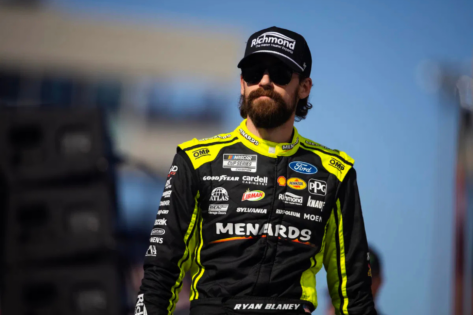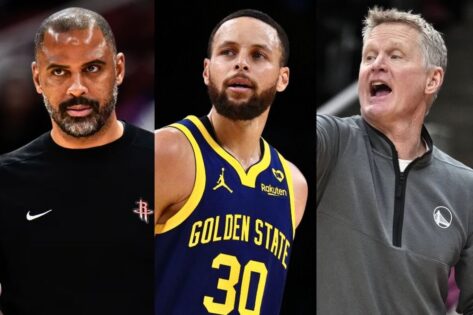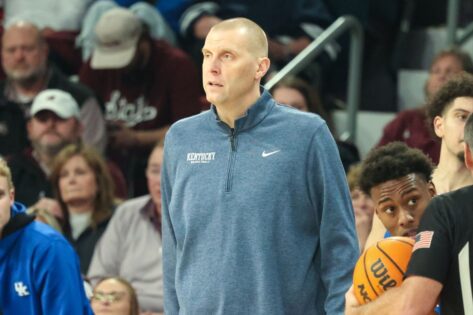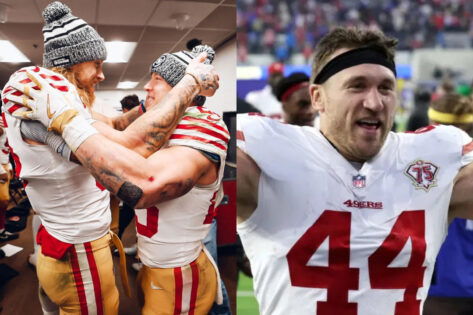What happens when two wildly different sports collide in the same arena? Bristol Motor Speedway answered that question by transforming its legendary NASCAR short track into a Major League Baseball venue for the MLB Speedway Classic. The event featured the Atlanta Braves and Cincinnati Reds playing in front of a record-breaking crowd, with racing fans and baseball loyalists sharing the stands. The spectacle drew widespread admiration from across the motorsports world, with drivers like Ryan Blaney publicly endorsing the crossover and recognizing its potential to reshape how venues are used.
That same spirit of reinvention had already made waves in Miami, where Formula 1 staged one of the most ambitious crossovers in motorsport history. In 2022, Formula 1 made a bold Miami debut, turning the Dolphins’ Hard Rock Stadium into a cultural spectacle with faux harbors, celebrity performances, and red-carpet-style gridwalks. For millions of American fans who had never watched a Grand Prix before, the weekend was a revelation. A football stadium had been transformed into a shrine for speed, introducing F1 to a new audience in dazzling fashion.
The Miami Grand Prix showed how creative staging and cross-sport collaboration can attract new audiences, turning traditional venues into cultural spectacles and redefining how sports connect with fans. NASCAR’s recent MLB crossover at Bristol follows that same playbook—transforming a racetrack into a baseball stadium to expand reach, spark curiosity, and prove that sports can thrive when they break their own boundaries.
From burnouts to baseball: NASCAR’s bold crossovers at Bristol
When Bristol Motor Speedway was transformed into a venue for a Major League Baseball match, that same spirit of reinvention was once more alive. Broadcasters, spectators, and drivers were all observing, some with open adoration and others with curiosity. Ryan Blaney, who had already watched the early telecast, was one of them. “I think it’s awesome. It looks neat. I was watching Marty Smith and Ryan McGee this morning on SportsCenter, kind of previewing it… and I think it’s gonna be fantastic.”
Blaney, who’s long been a fan of events that push the edges of convention, recognized the venue’s potential beyond racing. “If I were around, I would go, because that’s a once-in-a-lifetime experience. Hopefully it’s once in a lifetime, hopefully that becomes a normal thing. You had college football, now you have MLB, who knows what you can do? I mean, that’s like the perfect venue for something like that… You could put a soccer match in there, what they call it, a pitch? Yeah, you can do anything. I think it’s important. It’s great that MLB and NASCAR could kind of work together and do a little cross-promo.”
Blaney believes that the appeal extends beyond the show. It concerns the implications for NASCAR’s role as a cultural bridge in the future. This type of collaboration is crucial, particularly as drivers like Blaney strive to raise their profile among wider audiences. This emotion reminds one of the glory of the Battle at Bristol in 2016, as Tennessee and Virginia Tech transformed the speedway into the biggest football stadium in the world for a single night.
NASCAR has a history of experimenting with cross-sport spectacle. During the Battle at Bristol between Virginia Tech and Tennessee in 2016, Bristol Motor Speedway executed one of the most daring venue conversions in American sports history, converting its famous short track into a football field. More than most Super Bowls, the event attracted a record-breaking 156,000 spectators, demonstrating that NASCAR facilities could serve as more than just racetracks. The understanding that racing might serve as a bridge rather than a barrier was what made that night so successful, not simply the numbers.
NASCAR has embraced the idea ever since. By throwing first pitches at MLB games, Joey Logano, Kyle Busch, and Ryan Blaney have brought baseball right to the fans at ballparks. In 2019, Kyle Busch even entered a WWE ring with Michael Waltrip to win the 24/7 Championship live on Monday Night Raw for a small period. Furthermore, NASCAR converted the historic Los Angeles Memorial Coliseum, the home field of USC football, into a specially designed quarter-mile track for the Clash in 2022. The event featured a sellout audience seeing short-track racing in an urban environment, as well as a mid-race performance by Ice Cube.
While these incidents might appear to be isolated innovations, taken as a whole, they signify a gradual and intentional change: NASCAR is not only protecting its territory but also growing it. Additionally, courses like Bristol have been turned into test grounds for that change.
Blaney’s eyes were fixed on Iowa, even though he might have been fascinated with the race in Bristol. His season was at a turning point when he returned to Iowa Speedway, giving him a chance to gain momentum as the playoffs approached. Blaney’s consistency on the track was sending a clear message, even as the crossover event garnered media attention. Finding rhythm at a short track like Iowa, where accuracy is more important than horsepower, bears extra weight in a season marked by parity and unpredictability.
And Blaney knows one thing, and that’s time. He knows when to lean in and when the crossover becomes the story, whether it’s grabbing a moment off the track with spectators or calling his car when the field is packed.
Beyond the track: From Bandoleros to fatherhood, Blaney and Wallace’s enduring bond
The friendship between Ryan Blaney and Bubba Wallace stands out as a rare constant in a sport where rivalries frequently make headlines. It is based on deep roots and life experience, in addition to a similar desire. The two drivers have grown up together, managing celebrity, pressure, and life off the track, starting with Bandolero cars when they were nine years old and continuing to NASCAR’s national stage.
“We started racing Bandoleros together when we were 9 and raced together for a long time. I don’t think either of us… would ever think we’d be where we are 20 years later,” Blaney recalled recently. Their relationship has lasted through very personal times as well as checkered flags. Blaney was one of the first people to get in touch with Wallace after he became a father last fall. Wallace has now returned the favor as Blaney gets ready to welcome his child later this year. “He’s there for me and I’m there for him… through the good, through the bad, whatever it is,” Wallace said.
Following Wallace’s 2023 victory in Indianapolis, his first crown-jewel victory, there was an emotional moment that highlighted their bond. Blaney was among the first drivers to welcome Wallace when he got out of the car, not as a rival, but as a friend. The embrace was captured on camera as a silent, sincere conversation that didn’t require words. Even their playful jabs reflect deep-rooted trust. Blaney joked he likes Wallace “less and less every year,” while Wallace calls Blaney a “mushy teddy bear” since news of his upcoming fatherhood. Beneath the teasing lies mutual respect and loyalty.
The friendship between Blaney and Wallace serves as a reminder that bonds may still serve as a source of stability in a high-stakes sport that frequently prioritizes individuality. They navigate NASCAR and fatherhood together as lifelong friends, not just partners in the moment.
The post Ryan Blaney Backs MLB’s Bold Bristol Takeover as NASCAR’s Future Crossover Take Center Stage appeared first on EssentiallySports.



